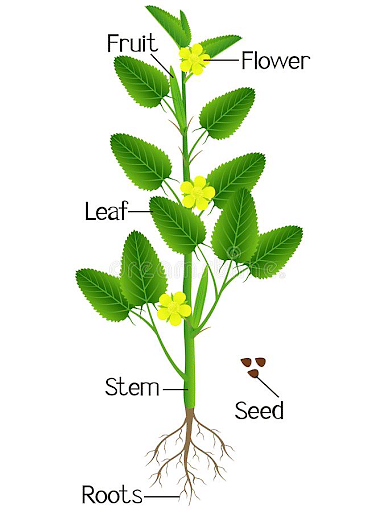
Content Curator
Jute (Corchorus Olitorius) is the second most important vegetable fibre after cotton due to its versatility. It is a natural fibre with golden and silky shine and hence called The Golden Fibre. Jute, genus (Corchorus) of about 40–100 species of flowering plants in the family Malvaceae, native to tropical and subtropical regions throughout the world.
The main application for jute fibre is in the production of textiles for the packaging of a variety of agricultural and industrial products that require bags, sacks, packs, and wrappings. Jute is frequently employed because of its inexpensive cost whenever bulky and robust textiles are required.
| Table of Contents |
Key Takeaways: Jute, Botany, Tracheophytes, Corchorus Confusus, Angiospermae, Corchorus Aestuans
Classification of Jute
[Click Here for Sample Questions]
The characteristics of Jasmine is given below:
| Kingdom | Plantae |
| Class | Dicotyledonae |
| Phylum | Spermatophyta |
| Order | Malvales |
| Division | Magnoliophyta |
| Family | Malvaceae |
| Genus | Corchorus |

Jute (Corchorus)
Characteristics of Jute
[Click Here for Sample Questions]
- The plants are generally tall, annual herbs that grow to a height of 2-4 m.
- They are either unbranched or have a limited number of side branches.
- The leaves are simple, alternating, lanceolate, 5–15 cm long, with a finely serrated or lobed margin and an acuminate tip.
- The flowers are small (2–3 cm diameter) and yellow, with five petals; the fruit is a many-seeded capsule.

Jute Diagram
Habitat of Jute
[Click Here for Sample Questions]
- The habitat range of the jute is very wide ranging from warm temperate thorn through tropical desert to wet forest life zones.
- For cultivation purposes it prefers a very fertile soil and a hot humid climate.
- It is reported to tolerate an annual precipitation between 40 and 429mm, annual average temperature range of 16.8 to 27.5°C and a pH in the range of 4.5 to 8.2.
- The habitat of Jute is native to the Indian subcontinent.
- It is also being cultivated in warm regions such as Egypt, southern United States, West Africa, Sudan, Turkey, Iran, Thailand, Java, Paraguay, Brazil, Argentina, Mexico and so on.
Learn More About:
| Concepts Related to This Topic | ||
|---|---|---|
| Flora and Fauna | Numerical Taxonomy | Species Definition |
| Shrubs | Ornithology | Difference between herbs and shrubs |
Common Species of Jute
[Click Here for Sample Questions]
- About 40–100 species of flowering plants of the hibiscus, or mallow, family make up the genus Corchorus (Malvaceae).
- The primary source of the fibre jute is the bark of Corchorus Capsularis and, to a lesser degree, Corchorus Olitorius, both of which are widely cultivated in Bangladesh and India.
- In Europe and West Africa, the leaves and young shoots are used as vegetables. However, the seeds are toxic.
Uses of Jute
[Click Here for Sample Questions]
- Corchorus Olitorius is the species that is used to make gunny cloth and bags.
- Jute fibres are stronger than cotton fibres because they are predominantly made of cellulose and lignin, which provides them tensile strength.
- Jute is mostly grown for making ropes, twine, and matting.
- Jute is also produced more affordably and efficiently, which contributes to its high demand.
- Jute is sometimes referred to as the "golden fibre" because of its adaptability.
- Jute fibres are also made into twines and rough cordage.
Also Check:
Things to Remember
[Click Here for Sample Questions]
- Corchorus is a genus of flowering plants in the Malwaceae family.
- Scientific name of Jute is - Corchorus.
- Coined as the ‘Golden Fibre’, Jute has become widely popular, not just for its versatile qualitites but also for its sustainability characteristic.
- It helps to make best quality industrial yarn, fabric, net, and sacks that has been used in raw materials for packaging, textiles, non-textile, construction, and agricultural sectors.
- The leaves of Corchorus olitorius possess six phenolic anti-oxidative compounds.
Sample Questions
Ques - What is the difference between Botany and Zoology? (2 Marks)
Ans - Botany is the study of plants while Zoology is the study of animals.
Ques - What angiospermae means? (2 Marks)
Ans - Angiosperms are plants that produce flowers and bear their seeds in fruits. They are the largest and most diverse group within the kingdom Plantae, with about 300,000 species. Angiosperms represent approximately 80 percent of all known living green plants.
Ques - What is the botanical name of Jute? (2 Marks)
Ans - The botanical name for jute is Corchorus. The genus is Corchorus, and as of now, about 40-100 species have been recognised.Corchorus olitorius is the species that is used to create gunny fabric and bags.
Ques - What is Taxonomy? (1 Mark)
Ans - Taxonomy can be defined as the science of naming , describing, and classifying all the species of living organisms, like- plants, animals, microorganisms etc.
Ques - List two uses of Jute. (2 Marks)
Ans - Jute is used for making ropes, strings, carpets, fibres.It is also made into twines and rough cordage.
Ques - Name the part of the jute plant from which jute is obtained? (2 Marks)
Ans - The jute fibre is obtained from the stem and ribbon (outer skin) of the jute plant.
Ques - Why is Jute called Golden Fibre? (2 Marks)
Ans - It is a natural fibre with golden and silky shine and hence called The Golden Fibre.
Ques - What is the kingdom of Jute? (1 Mark)
Ans - The kingdom of Jute is Plantae.
Ques - Sunflower oil is most suitable for which type of patients? (1 Mark)
Ans - Sunflower oil is most suitable for heart patients.
Also check:





Comments